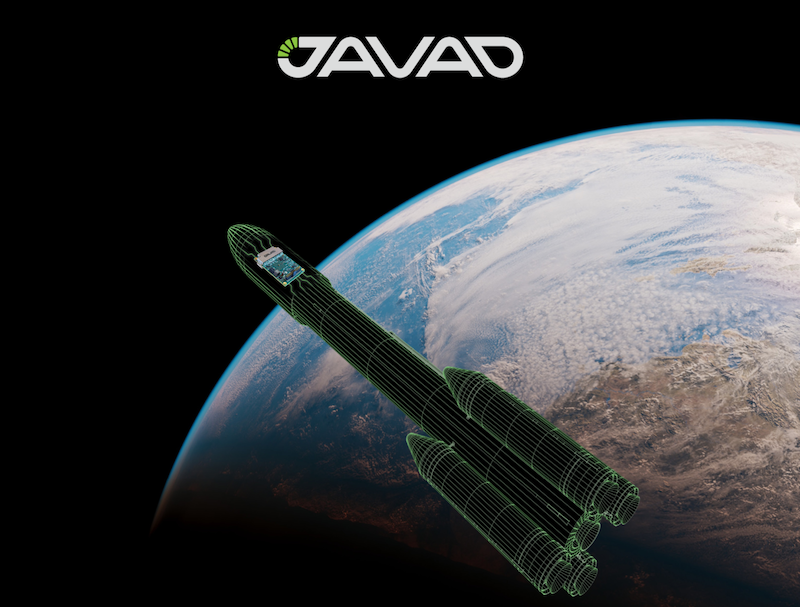When GNSS pioneer Javad Ashjaee founded JAVAD GNSS, his focus was clear: to innovate.
He made critical discoveries over the course of his career, and was the first to join two constellations, GPS and GLONASS—a major milestone. The rest of the industry followed his lead, adding more satellite systems and changing the PNT landscape.
The distinguished engineer left behind what JAVAD VP of Product Development Simon Baksh describes as a “treasure chest of patents” when he passed away—a result of his years of innovation in the field. The JAVAD team is building on that work and his very-high tech vision through product enhancement and development, which is allowing the company to move into emerging markets.

“Our transition is taking the technology and turning it into industry leading products,” Baksh said, noting the company has launched several products based on Ashjaee’s patents over the last year. “This is, if you will, JAVAD 2. The original Javad is no longer here, but the spirit of what he started is. So, we’ll continue along that path but with more of a product focus than a technology focus.”
An evolving industry
For years, the PNT market opportunities lied in traditional vessels and aircraft across the land, air and sea domains, Baksh said. There wasn’t much deviation from common geospatial scenarios until UAVs entered the mix. Not only did sensors need to become smaller and lighter to fly on these systems, there was also a need to track attitude as well. That led to the IMU/GNSS integrations that are common today.
Creating PNT solutions for UAS has become somewhat ordinary, Baksh said, but there are other areas grabbing the industry’s attention. Spoofing and jamming are chief among them, with the impact of both intentional and unintentional inference now top of mind. In turn, the biggest industry demand has become resilience.
“That’s being driven, in large part, by geopolitical events in Ukraine. But the behavior is still the same if you get RF interference and there’s no hostility around you. It still affects your receiver,” Baksh said. “But that’s the biggest change we’ve seen. It’s shifted away from how accurate you are and how many channels your receiver has—people don’t even ask that question anymore—to will your receiver continue to work if there’s RF interference.”
Customers need to know they can survive interference events, Baksh said, and that’s a concern JAVAD has experience addressing. JAVAD’s founder received the first patent for anti-jamming and spoofing, and such capabilities have always been part of the company’s receivers. JAVAD continues to build on that advantage.
Headed to Space
The next big thing is the aerospace segment, Baksh said, with more rockets launching satellites, including low Earth orbit (LEO) satellites, into space. And it’s an interesting area to serve, as the space segment brings a whole new set of challenges.
“The environment is different than what we have on traditional platforms,” Baksh said. “Winter and summer are the extremes for temperature. In space, it gets very cold. So you have a really extreme environment with radiation and high acceleration.”
The goal is to create solutions that can survive in this atmosphere with extreme temperatures and huge G-forces, Baksh said. The harsh environment will impact how receivers behave, Baksh said, and is much different than what happens on a slow moving vessel or aircraft. That’s the next move for JAVAD, adding “space hardened” products to the portfolio while still serving the traditional applications the company has taken on for years.
“The traditional applications are very sedentary, very normal. They’re predictable and easy to model,” he said. “The new ones require a lot more tuning to cater to both the extreme environment and the high velocities.”
New products addressing market shifts
JAVAD continues to advance the technology with updates and new product releases that meet changing demands. One such innovation for the geospatial realm is the TRIUMPH-1M Plus smart antenna, an updated version of an existing product. Many professionals use GNSS rovers, walking around carrying a 2 meter poll with a device at the top for RTK—and an antenna attached to that device for radios and cell modems. The TRIUMPH-1M Plus patented antenna is actually embedded into the top section of the pole, which means there’s no breakage in the feed. It also has excellent radio reception.
“That’s the most resilient, most protected antenna device on the market,” Baksh said, “and no one else has it because we have the patent.”
The T3-NR smart antenna is an option for those who want a smaller receiver and don’t need all the bells and whistles the TRIUMPH provides, Baksh said, which includes mapping professionals. It’s lightweight and has excellent power management, with the ability to complete a day’s work without a battery swap.
JAVAD also has released enclosure products that feature the same GNSS technology but can be installed on vessels, vehicles, aircraft or buildings. When the antenna can’t be put on a pole, customers can leverage the same technology from JAVAD’s box products.
“All of this means we had to update our firmware for the sensor fusion associated with all of these technologies,” Baksh said. “And it all comes from one company. We make our own antennas, radios and GNSS receivers, and this goes all the way from data collection to post processing. From the onset of the business, it’s all been self-contained. But even more marvelous is we have our own state-of-the-art factory in the U.S. where we actually build all of our products.”
JAVAD is also focused on providing OEM solutions for High Dynamic Applications (HDA), a proprietary process that ensures reliable performance even in the most extreme environments, like space.
The TR-2S HDA and TR-3S HDA provide exactly that. The TR-2S is a complete receiver solution. It’s fast, accurate and compact, making it well suited for aerospace applications. The TR-3S board replaces the TR-G2T HDA, which has served the aerospace, defense and launch industries as the standard for years. The drop-in replacement offers significant increases in signal tracking and performance.
What’s next
JAVAD is entering an expansion phase, Baksh said, and has grown to four locations. The team plans to announce more new products at INTERGEO 2023 in Berlin later this month, continuing to build on a legacy of innovation.
“Traditional development is fine for the existing geospatial market,” Baksh said, “but new markets call for developing new algorithms and for space-hardened hardware. And those call for new engineering talent and new versions of old products to serve those markets.”






